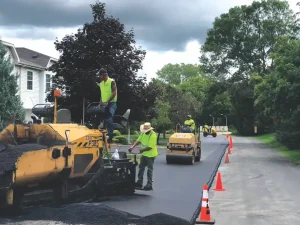What’s the Best Time of Year to Patch Asphalt?
Asphalt patching is filling potholes and cracks to prevent further damage.
Patching asphalt immediately after there are cracks and holes may seem like a great idea. However, there are a few things that go into consideration when working with asphalt: the weather, temperature, and seasons. For whatever repairs, you need to have the right temperatures for effectiveness. Therefore, picking the best season is vital.
Why is Patching Asphalt important
Maintaining asphalt-constructed parking lots, courtyards, or gaming grounds is important for two major reasons. One, pavement in good condition is important for business aesthetics. A well-maintained lot makes a good first impression on potential customers and sets the stage for everything else.
The second reason is patching asphalt reduces the risk of lawsuits that may occur from either tripping or any damage to vehicles. For instance, if a pothole results in an injury, the owner and management can be held financially responsible for poor pavement conditions.
Well-maintained asphalt also helps to ensure durability and longevity.
Factors to Consider before Picking when to Patch Asphalt
-
Temperature
Extremely low temperatures can result in asphalt contracting and shrinking. This in return creates tension as the asphalt tries to pull away from itself. The lower the temperatures, the faster the asphalt contracts, resulting in cracking to relieve some of the built-up tension. Repairing asphalt in freezing temperatures can cause water trapped under the pavement to freeze. The frozen water causes the ground to heave as it expands, causing cracks.
Patching asphalt in extremely hot temperatures can cause oxidation, which is caused by long exposure to UV radiation. This happens when there’s less rain and more sunlight. When this happens, light oils in asphalt mix and form heavier oils making it more brittle and susceptible to cracking. Hot temperatures also prevent asphalt from setting.
The right temperature would therefore be above 50 degrees or below 75 degrees Fahrenheit. You don’t want it to be too cold that it cracks and freezes or too hot that it oxidizes and doesn’t set.
-
Weather
Asphalt has to drain to safeguard the concrete from moisture damage. A lack of proper drainage causes erosion as water can cause cracks and further damage.
Aside from moisture, another weather factor is precipitation. Drizzles are fine when patching asphalt. Heavy rains, however, can cause asphalt to cool faster which can result in water damage. The drier the season, the better the chances of successful patching.
Patching asphalt in poor weather could lead to cracking, raveling, rutting, and stripping.
What’s the Best Time to Patch Asphalt?
The best time of year to patch asphalt is when the temperature is between freezing and extreme heat; the sweet spot. This could be somewhere around 10 and 24 degrees. Patching up asphalt during a break in precipitation is recommended as well. Heavy winds can cool asphalt as its being laid, which could cause problems.
Springtime or summer is the best time to patch asphalt as the best temperature for hot paving is at least 70 degrees Fahrenheit or higher. It is possible to patch asphalt when it’s cold but to achieve the best results, warmer temperatures are recommended.
To learn more about patching asphalt, visit our website or contact us here.





